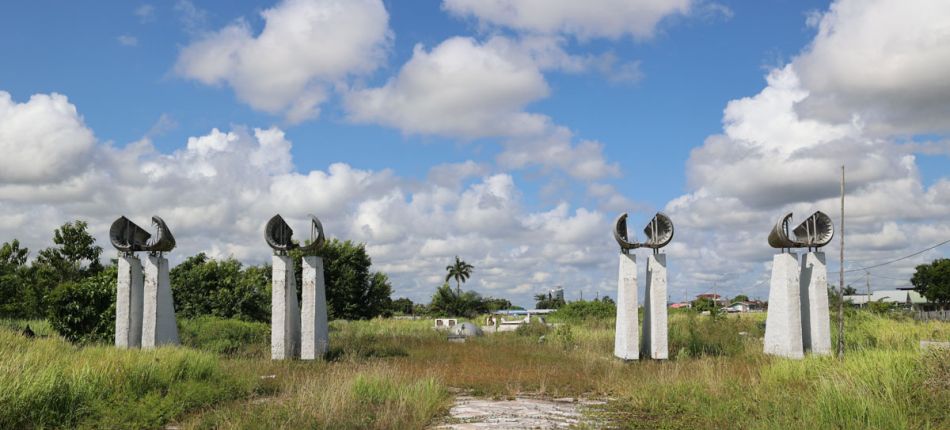Suriname - Names from the past
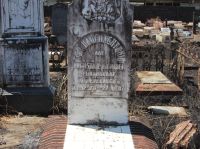
On Monday October 30th 2023 project 'Names from the past' was launched, in which the graves and grave monuments of Surinamese who have played an important or special role in history will be inventoried. The start of the project was during the course 'Funerary Heritage in Suriname', organized by the Built Heritage Foundation Suriname (SGES). Now that graves can be cleared from the cemeteries, graves of important Surinamese people may be in danger of disappearing. Because not all graves can be preserved due to a lack of space in the cemeteries, care must be taken to ensure that no heritage is lost.
Suriname - Nomination Jodensavanne World Heritage List
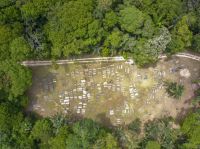
Jodensavanne Archaeological Site in Suriname is formally one of the twenty heritage nominations for placement on the World Heritage List in 2023. In July 2023, UNESCO's World Heritage Committee will meet to decide whether the site will definitely be given a place on this prestigious list.
The Shared Cemeteries Project
About
Shared Cemeteries is all about (former Dutch) funerary heritage all over the world. The website is a non-profit collaboration between organizations, institutions and researchers from different countries involved in funerary heritage with a Dutch background. These can be historical cemeteries, churches as well as individual grave monuments. Shared Cemeteries is 'work in progress' and committed to share knowledge and information.
Donate
Shared Cemeteries is about sharing history. We can use your support to reach our goal and maintain this website.
Consider a small donation to help us map out former Dutch heritage.
You can donate by clicking the button below.
Collaborate
Shared Cemeteries is all about (former Dutch) funerary heritage all over the world. The website is a non-profit collaboration between organizations, institutions and researchers from different countries involved in funerary heritage with a Dutch background. These can be historical cemeteries, churches as well as individual grave monuments. Shared Cemeteries is 'work in progress' and committed to share knowledge and information.
Our network


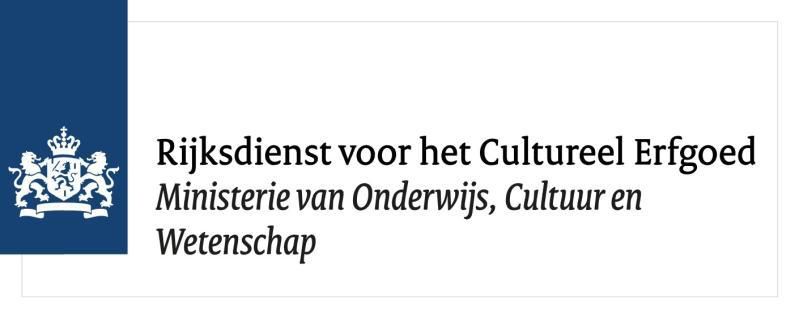

Latest Articles in Countries
Suriname

Hodi Mihi Cras Tibi - TRIS collective grave
In various places in Paramaribo, you will find references to fallen soldiers of the Armed Forces in Suriname, or in Dutch “Troepenmacht in Suriname”, TRIS for short. More than forty names are commemorated at a historic location at Fort Zeelandia in Paramaribo. A collective grave of 14 men can be found at the Hodi Mihi Cras Tibi cemetery on the Sophie Redmondstraat in Paramaribo. And then there are several graves in other cemeteries in Suriname, but also a number in the Netherlands. A search for their graves and funerary monuments seems almost impossible, but this article aims to gain an insight.
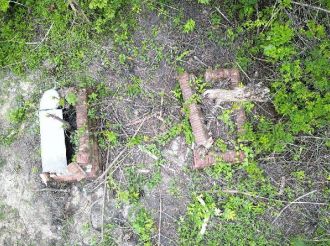
Plantation Bellevue - Monuments plantation owners
On Thursday 19 May 2022, a team from the Built Heritage Suriname Foundation (SGES) paid a working visit to the Coronie district to inspect and document some historic graves on the Bellevue plantation. The reason for this is the message from Mrs. M. Vroom, that some old graves on the plantation would have been damaged as a result of rehabilitation work on the East-West connection. The SGES team consisted of Rachel Deekman, Jennifer Scheuerman and Stephen Fokké.
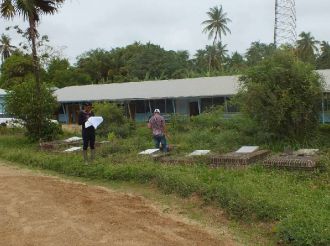
Plantage Clyde – Missionary Cemetery Salem Church
The historic graves at the front of the Salem Church at Clyde Plantation in Coronie were partially documented for the first time, in 2003, by Philip Dikland. Of the 18 graves, 8 had been mapped. Two large brick tombs have no headstone, so it is unknown who is buried there. In 2014, Dikland documented another seven graves together with Max van de Poel.
Caribbean
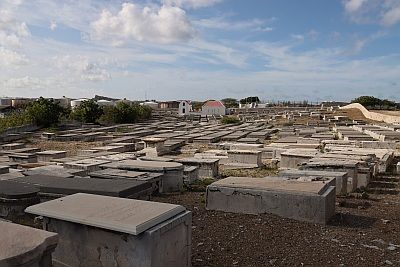
Willemstad – Jewish cemetery Beth Haim
The diaspora of Jews living in the Iberian Peninsula caused quite a stir, especially in the New World. The expulsion was the result of the Spanish Inquisition established in 1478. Ever since the Moorish rulers were defeated in Spain, the Catholics had forced the remaining Moors and Jews to convert to Christianity. One of the consequences of the Inquisition was that over a longer period of time around 160,000 Jews fled the country. Many moved to Portugal, but the Inquisition ruled there too, causing many Jews to move further along. Those who stayed were forced to convert. Jews who converted were called 'new Christians' or 'conversos', which means as much as converted. The expulsions reached a peak in 1492 and 1497.
India
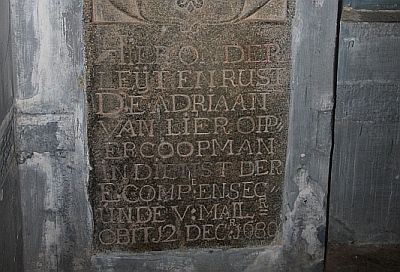
Fort Kochi - Adriaen van Lier
In 2025 it will be 345 years since Adriaen van Lier was buried in the St. Francis Church in Cochin. That location is not unusual, you would say at first glance. After all, he was opperkoopman and secundo of the VOC trading post in Cochin. It was fitting that he was taken to his final resting place with all respect and ceremony, but in his case the choice of St. Francis Church was not self-evident. During the presence of the VOC, the church was a Protestant church and Adriaen van Lier was a Catholic.
While the now Protestant Holland was involved in the Eighty Years' War (1568-1648) against Catholic Spanish rule and the battle intensified, Adriaen van Lier was born in Delft around 1620. Catholicism was not forbidden, but it was banned from public life and the profession of faith was pushed back to hidden churches. Positions in governments were officially not accessible to people of other faiths.
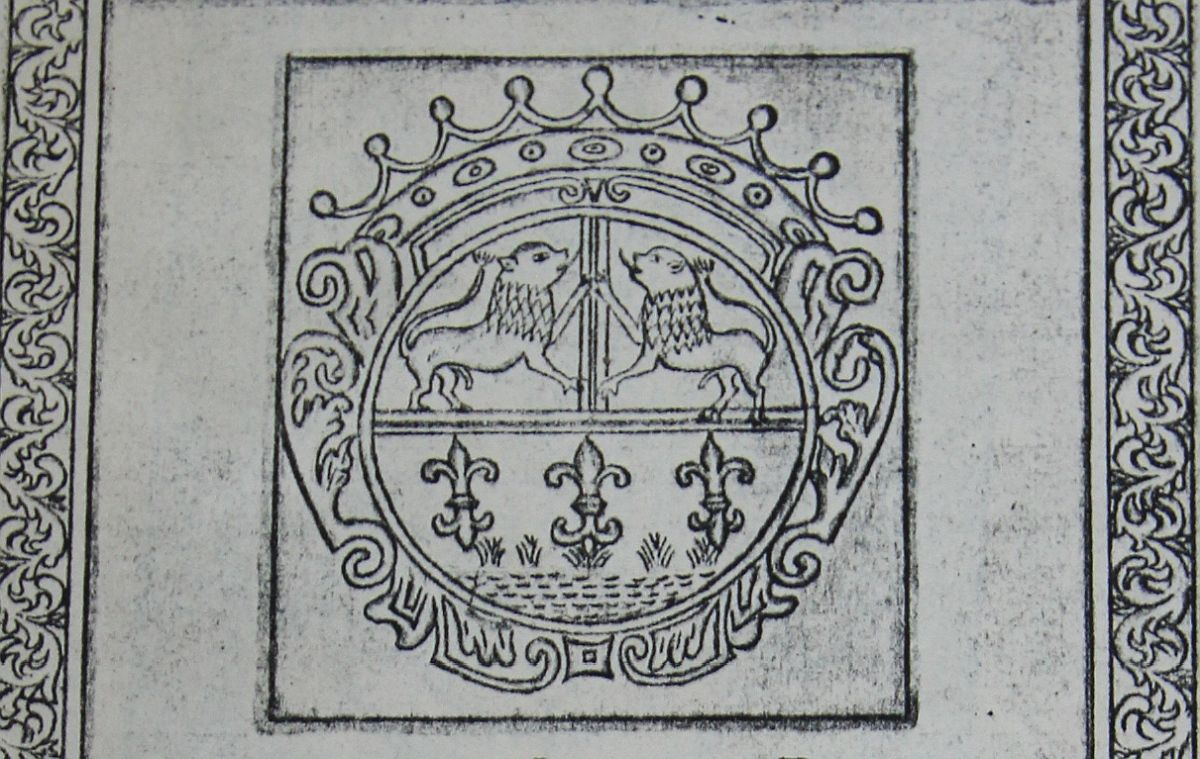
Fort Kochi - Abraham Cornelis de la Haye
In August 1752, head merchant Abraham de la Haye feels that his time is almost up. Only 43 years old, he becomes sicker and weaker by the day, realising the uncertainty of his life. Life had looked so promising. He had joined the VOC in Batavia in 1723 as a ‘soldier of the pen’ and had risen to the rank of head merchant. For the past two years, he had served as the provisional supreme commander of Cochin and the Malabar Coast. Just a year ago, his family had grown with the addition of a son. He had named him Robbert Christoffel — Robbert after his own father, and Christoffel after his father-in-law. Robbert was baptised in St. Francis Church in Cochin, close to his home. The same church where he will soon be buried. Before it comes to that, he still has some matters to settle, including changing his will. Together with his wife, Geertruijda Walling, he had already made a will, but back then there were no children; now there are three. He has held administrative positions all his life as an accountant, tax officer, chief administrator, and secretary. He was born in Colombo and, as a child, moved with his parents and his brother Huijbert to Batavia. With his own family, he went to Surat in northern India, and now the end is approaching in Cochin.
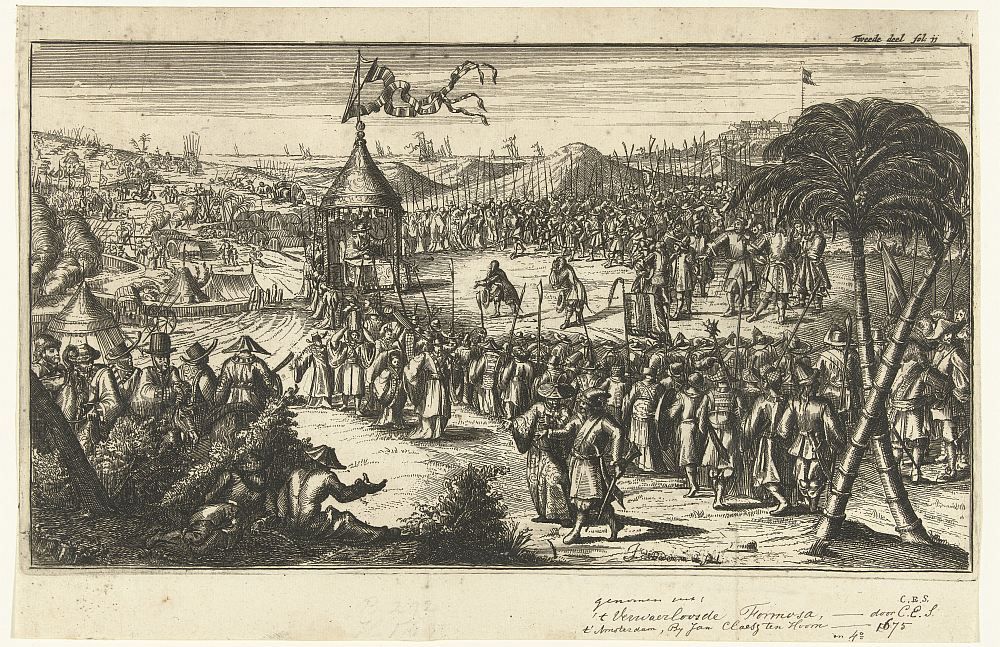
Fort Kochi - Barend Hermanssoon
On 22 October 1655, the Zeeland Chamber of the Dutch East India Company (VOC) approved the decision that at least 4,000 men would be transported to the Dutch East Indies with the upcoming winter fleet because of the great lack of personnel.[i] After only a week, they started hiring staff. On November 8, 1655, corporal Barend Hermanszn van Groningen was hired for the ship Ter Tholen with a salary of fourteen guilders per month. Already on the 23rd of November the decision was made to appoint him as a sergeant with a salary of eighteen guilders.[ii].[iii] On 30 December, the drums were beaten to allow the people of the ship Ter Tholen to board, after which they anchored off Vlissingen until favourable weather for departure. On 6 January 1656, skipper Daniel Looper left the roadstead and needed 6 months and 13 days to arrive in Batavia.
USA
Brooklyn – First Dutch Cemetery (disappeared)
After the successful establishment of a Dutch colony on the southern tip of Manhattan, the first regular church services were held in 1628 in the fort Nieuw Amsterdam. This happened in a room of the grain mill that the colonists had built here. In 1633, the first wooden church was built near the banks of the East River.
Green-Wood Cemetery
In New York's nearly 400 years of existence, countless cemeteries have been laid out, used and disappeared. The oldest, especially churchyards, date from the second half of the seventeenth century, when first the Dutch and later the English had control over the settlement. With the growth of New York, the need for larger cemeteries arose. These cemeteries were no longer built close to the city, but further away, in places that were less suitable for agriculture, for example. With many of those cemeteries from the nineteenth century, there is no immediate thought of a link with Dutch history, but there often is such as at Green-Wood in Brooklyn.
The Stuyvesant Vault
Peter Stuyvesant was director-general of the Dutch colony of New Netherland from 1647 until it was ceded to the English in 1664. Stuyvesant was not well liked. Although the colony continued to expand during his reign, he was in constant conflict with the population.
In 1651 Peter Stuyvesant bought building (farm) No. 1 from the WIC, located about ten kilometres outside the settlement. The building (pronounced boweray in English, later bowry) included land with outbuildings, livestock and two enslaved Africans.[1] Stuyvesant had a chapel built on the piece of land in 1660 for his neighbours and employees.[2] This fact in itself is remarkable, as a private chapel was not common for Protestants. But Stuyvesant may have chosen this because the distance to New Amsterdam was too great. It is not known exactly what the chapel looked like.
Other countries
Rome - Monument of Dutch Zouaves
In the nineteenth century, numerous new states emerged as kingdoms fell. This is particularly true for the Italian peninsula. In the first half of the nineteenth century, this consisted of a conglomeration of smaller areas of power within the center the 'Ecclesiastical State', the pope's area of power in Rome. When this area was threatened, the pope called on volunteers to fight for its defense.
What a few thousand Dutch people had to do with this is related to the Catholic emancipation in the Netherlands in the second half of the nineteenth century. These papal warriors left few traces in the Netherlands, but in various cemeteries in the Netherlands the text "Papal Zouave" sometimes stands out. A search for the still existing funerary monuments leads to a (far from complete) first overview.
Istanbul - Monument Berthe van Lennep
The two cemeteries founded by Dutch traders in Turkey are strongly linked to families like De Hochepied, Leidstar and Van Lennep. They not only represented the Netherlands but also did good business with their trading houses. They intermarried and were buried in the Dutch cemeteries in Smyrna or Istanbul. It is not surprising that after a few centuries the families were more internationally oriented than they were Dutch.
Izmir - Felemenk Bahçe / Flemish garden
After it was no longer possible to bury in the old cemetery, the Dutch community in Smyrna (present Izmir) opened its own section at the larger European cemetery in the east of the city. This part was named "Felemenk Bahçe" or Flemish garden. Not that the garden was Flemish, but the name stood for the Low Countries, as Belgica was used in Latin to indicate the Low Countries.
Japan
Hendrik Duurkoop’s gravestone
The gravestone of Hendrik Duurkoop in the Dutch Cemetery at Goshinji temple in Nagasaki has long been famous as the oldest surviving gravestone in Japan belonging to a European.[1] Duurkoop, who divided most of his adult life between Batavia (modern-day Jakarta) and Nagasaki, died at sea at the age of 42 en route to his second posting as director (opperhoofd) of the Dutch factory at Dejima. This essay assembles the available historical materials in Dutch and Japanese to give a brief account of Duurkoop’s life and the history of his gravestone after his death.[2]
Guido Hermann Fridolin Verbeek
In 2003, Ms Hisayo Murase published the book 'Verbeck of Japan'. The book is a translation in Japanese of the biography of Guido Hermann Fridolin Verbeek written by W.E. Griffis in 1901 and provided with annotations.
In 2012, again in Japan, a second book on Verbeek's life was published, entitled: 'Guido F. Verbeck. A life of determined acceptance.' from Ms Noriko Itoh. Verbeck is an Anglicization of the family name Verbeek. The Dutchman Verbeek made a great contribution to the development of Japan in the nineteenth century. Besides composer Willem Pijper and poet Hendrik Marsman, he may be considered one of the greatest sons of Zeist. Despite this his name is unknown in Zeist and nothing reminds of him in his home village.
Buried at the other side of the bay (from 1655)
In 1641 the Dutch were forced to move from Hirado to Nagasaki and lost their privilige to bury their dead on land. Those who died were buried at sea instead. In October 1654 the Dutch were finally given permission to bury their dead on land again, but it still took almost a year before the first body was actually interred in a grave.
FAQ
Shared Cemeteries started with Suriname and Japan. India and the United States of America followed in 2021. Other main topics will be on the Carribean Islands within the Kingdom of the Nederlands and Indonesia.
The following countries will be featured on Shared Cemeteries:
- Bangladesh
- Brasil
- Indonesia
- Carribean Islands within the Kingdom of the Nederlands
- China
- Congo
- Guyana
- India
- Italy
- Japan
- Madagascar
- Malaysia
- Mauritius
- Portugal
- South-Africa
- Sri Lanka
- Suriname
- Svalbard (Spitsbergen) - Norway
- Taiwan
- Turkey
- United States of America
- ...
If you have any supplement, please let us know.
The website is still under development, so we may not have processed all the data yet. Nevertheless, we aim for completeness. Please contact us, we may be able to add the cemetery to the overview.
Information and research material on the website is freely available on condition that the source is acknowledged. The material (incl. photos) is available under the Creative Commons license CC BY-NC-ND 4.0, unless otherwise indicated. This means that you are free to share the work under the following conditions: 1) Attribution 2) Non-Commercial 3) No Derivative Works. More information about CreativeCommons licenses via https://creativecommons.org/licenses/by-nc-nd/4.0/deed.en.
Please send us a message via the contact form and we will get back to you as soon as possible.
The website focuses mainly on cemeteries and funerary monuments and less on people. For some cemeteries, a (limited) overview of buried persons is available, please check the relevant cemetery.
Newsletter



